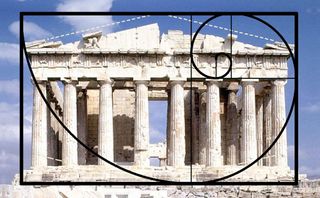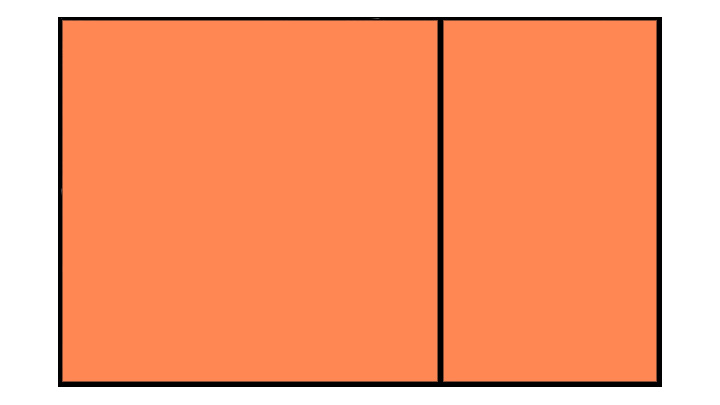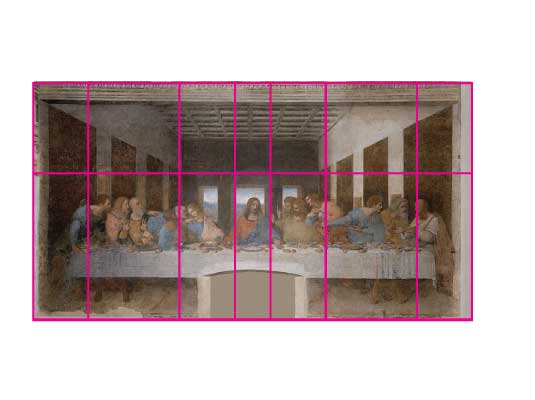Golden Ratio Art Degas Golden Ratio in Sea Horses
A designer'south guide to the Gilt Ratio

What is the Golden Ratio? This guide is here to explain all. In short, it's a mathematical ratio, commonly institute in nature. Information technology can be used to create organic-looking, visually-pleasing compositions in your artwork or design projects, and is useful for graphic designers, illustrators and digital artists. Likewise known as the Golden Mean, The Golden Section or the Greek letter phi, it can be deployed to bring structure and harmony to your projects.
Nosotros'll dive into what the Golden Ratio is and how you lot can use it. You'll also acquire some great resources for further inspiration and written report. While you're brushing upwards on your skills, you'll also want to check out our guides to other vital art techniques, including filigree theory and color theory.
What is the Golden Ratio?
Closely related to the Fibonacci Sequence (which y'all may retrieve from either your schoolhouse maths lessons or Dan Brown'south The Da Vinci Code), the Golden Ratio describes the perfectly symmetrical human relationship betwixt ii proportions.
Approximately equal to a 1:1.61 ratio, the Golden Ratio can be illustrated using a Golden Rectangle. This is a rectangle where, if y'all cut off a square (side length equal to the shortest side of the rectangle), the rectangle that's left will have the same proportions equally the original rectangle.

So if you remove the left-hand square from the rectangle above, y'all'll be left with some other, smaller Golden Rectangle. This could continue infinitely. Similarly, adding a square equal to the length of the longest side of the rectangle gets you lot increasingly closer to a Golden Rectangle and the Golden Ratio.

This relates to the Fibonacci Sequence (0, 1, 1, 2, 3, 5, eight, 13, ...) , in which each term is the sum of the previous two.

Plotting the relationships in scale provides us with what's know as a Golden Spiral. This occurs organically in the natural world.
If you're still a little dislocated, the video beneath gives a skillful overview of the Gold Ratio in utilize. In that location's a introduction, afterward which the teacher shows y'all how to construct a Golden Ratio in Illustrator. This is used to create a Golden Spiral, followed past Gilt Circles.
The Golden Ratio in use
It'south believed that the Gilded Ratio has been in use for at least 4,000 years in human art and blueprint. However, it may be fifty-fifty longer than that – some people argue that the Ancient Egyptians used the principle to build the pyramids.
- World-famous buildings to inspire you
In more contemporary times, the Aureate Ratio can be observed in music, art, and blueprint all around you. By applying a similar working methodology, you can bring the same blueprint sensibilities to your own piece of work. Permit's take a look at a couple of examples to inspire you.

Ancient Greek architecture used the Gilt Ratio to make up one's mind pleasing dimensional relationships between the width of a building and its height, the size of the portico and even the position of the columns supporting the structure.
The terminal result is a building that feels entirely in proportion. The neo-classical compages motion reused these principles too.

Leonardo da Vinci, like many other artists throughout the ages, made extensive use of the Gilded Ratio to create pleasing compositions. In The Last Supper, the figures are arranged in the lower two thirds (the larger of the ii parts of the Golden Ratio), and the position of Jesus is perfectly plotted past arranging golden rectangles across the sail.
There are likewise numerous examples of the Aureate Ratio in nature – yous tin observe it all around you. Flowers, bounding main shells, pineapples and even honeycombs all exhibit the same principle ratio in their makeup.
Next page: how to construct a Golden Ratio rectangle
Related articles
Source: https://www.creativebloq.com/design/designers-guide-golden-ratio-12121546
0 Response to "Golden Ratio Art Degas Golden Ratio in Sea Horses"
แสดงความคิดเห็น